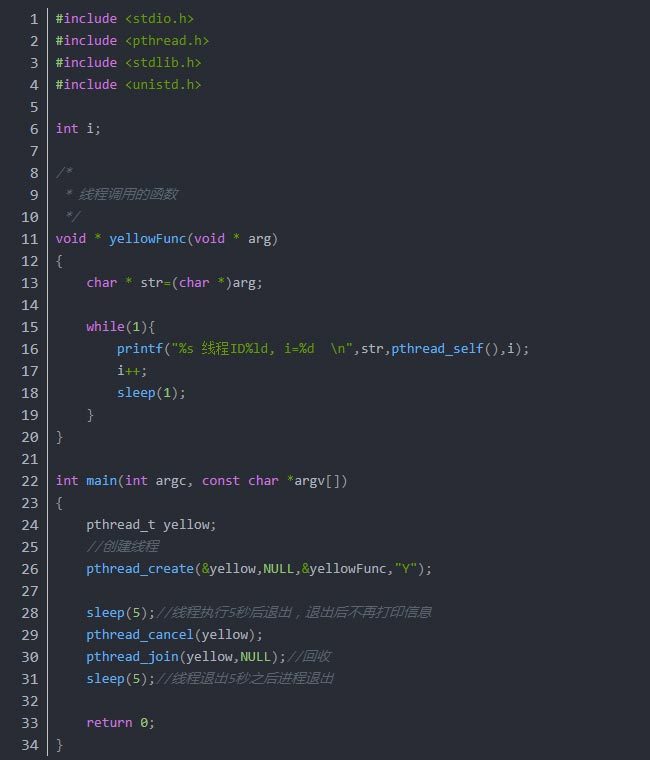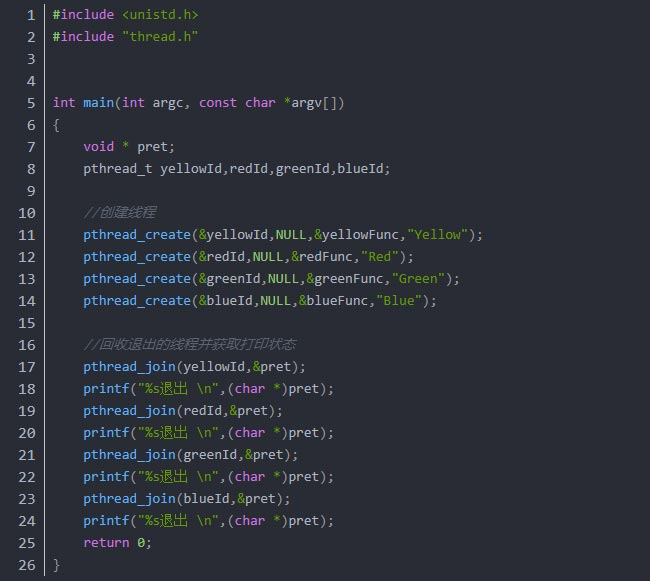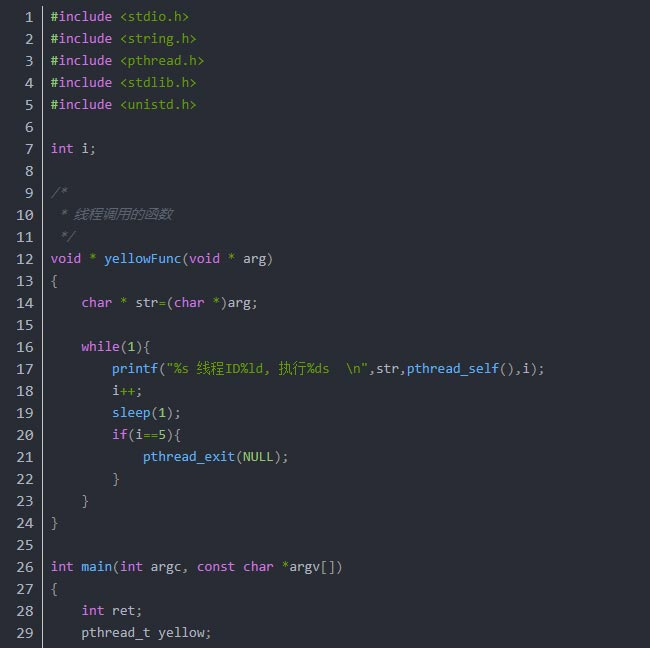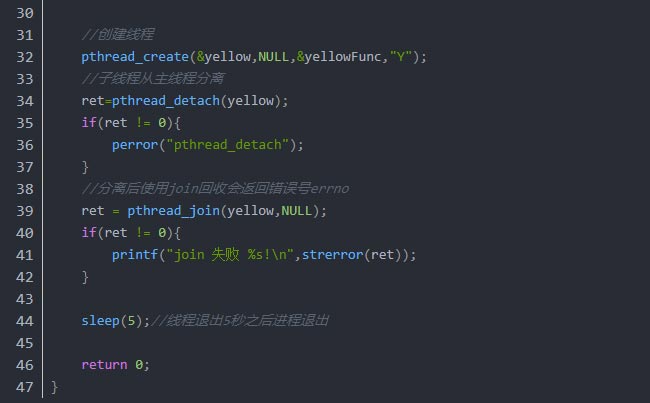线程终止:
1.start_routine回调函数执行return;
2.线程自身调用pthread_exit();
3.其他线程调用pthread_cancel(ID)将此进程终止;
任意线程调用exit()使整个进程退出。
线程回收:线程默认joinable状态,终止后需使用pthread_join回收资源;将子线程使用pthread_detach从主线程分离后处于unjoinable状态,系统等线程退出后自动回收资源。
常用的 函数调用如下:
pthread_exit():结束本线程
#include
void pthread_exit(void *retval);
参数含义:
retval:线程返回值,其他线程调用pthread_join()接收。
pthread_cancel():向指定线程发出取消请求,使用pthread_join回收,
#include
int pthread_cancel(pthread_t thread);
参数含义:
thread:要终止的线程ID;
返回值:执行成功返回0,成功不一定会让指定线程终止;执行失败返回错误号,
pthread_join():等待线程终止回收资源,获取返回值retval,
#include
int pthread_join(pthread_t thread, void **retval);
参数含义:
thread:线程 ID。
retval:存放回收线程的返回值。
返回值:成功返回0,失败返回错误号。
pthread_detach():分离线程,线程终止后系统自动清理,分离后不能再使用join获取状态,
#include
int pthread_detach(pthread_t thread);
参数含义:要分离的线程 ID。
返回值:成功返回0,失败返回错误号。
本章代码在thread/目录下,实验1:路径为:11_Linux系统开发进阶Linux系统编程_章节使用资料。
使用pthread_cancel让线程退出,pthread_join回收,代码在cancel.c:
编译:gcc cancel.c -o cancel -lpthread,运行结果:
使用pthread_exit让线程退出,pthread_join回收线程资源,代码在/thread/exit/目录下,
线程依次使用pthread_exit退出,然后pthread_join依次回收线程,main.c:
编译运行,可以看到线程按顺序依次退出并打印pthread_exit的返回值:
实验三:
使用pthread_detach()设置线程分离,pthread_exit()退出后,系统自动回收,最后调用pthread_join()发现报错,说明线程分离后线程自动释放。
实验代码在detach.c:路径为:11_Linux系统开发进阶Linux系统编程_章节使用资料。

编译,gcc -o detach detach.c -lpthread,运行结果如下,发现使用pthread_join()报错: